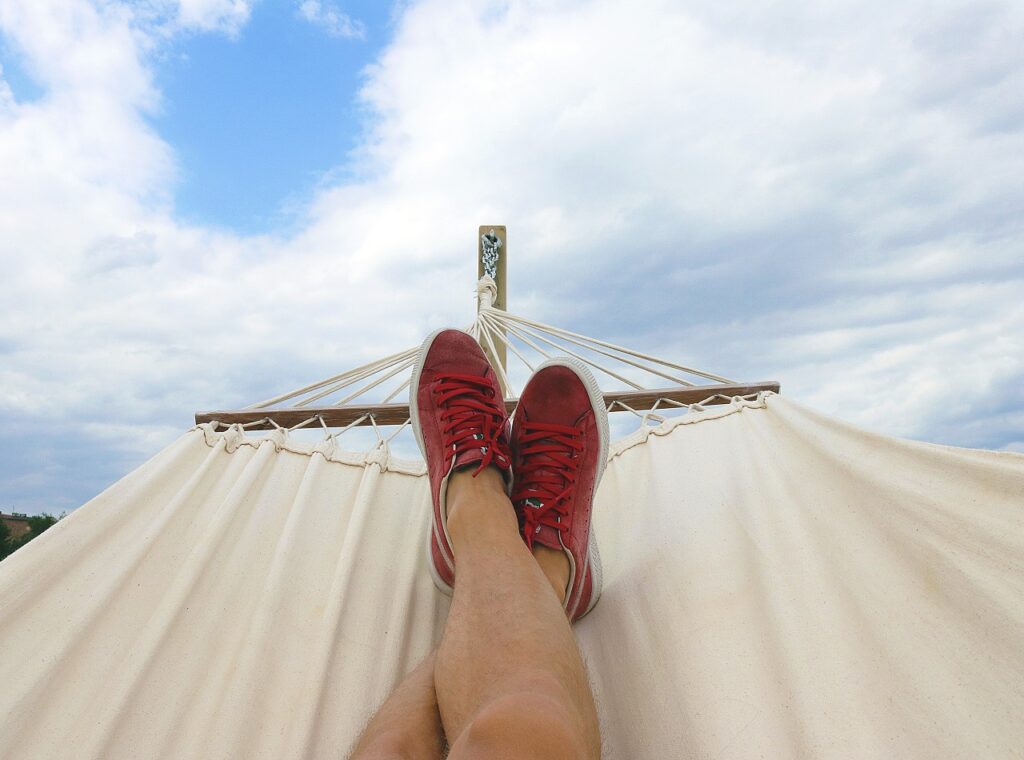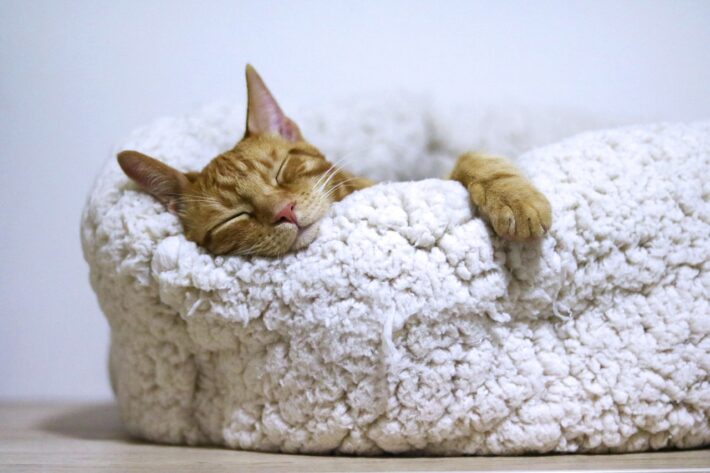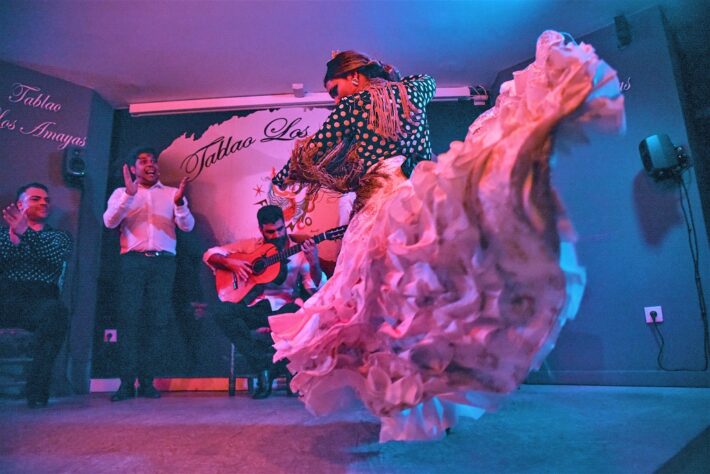“La Siesta” is one of Spain‘s best-known customs – Here we will unveil all key facts, myths and truths about this traditional power nap!
I am sure you have heard about siesta before, as it’s a stereotype closely associated with Spain but… do you actually know what is siesta and its origin? What time is traditional siesta in Spain? What is the normal siesta time? How long does it take? And most importantly…is siesta still happening for real in Spain? Let’s find out!
Siesta Key Facts I: What is siesta?
A siesta (Spanish, meaning “nap”) is a short nap taken in the early afternoon, often after lunch, when everything shuts down in Spain. Such a period of sleep is a common tradition in some countries, particularly those where the weather is warm.
Siesta Key Facts II: Origins
If we go back all the way to the very first origins of this cultural trope, we land in modern-day Italy. The word siesta actually derives from the Latin sexta, which comes from the Roman tradition to take a break at the sixth hour of the day, that is, midday.
As for the origins of the practice in Spain, the scorching summer heat predominant mostly in the South is thought to have motivated those doing agrarian work to take a break to avoid the hottest part of the day.
Besides, after the Civil War, it was common for people to work two jobs to support their families — a morning shift and an evening shift. Having a two-hour break in between allowed them to recharge a bit before going to their next job, or merely to get from one place to another.
Siesta Key Facts III: What is the purpose of a siesta? Why do Spaniards do siesta?
The purpose of siesta is one of the most important key facts to understand this tradition. Why do Spaniards do siesta? As a power nap! To quickly revitalize the subject, have a short break from work and supplement normal sleep, especially when someone has accumulated a sleep deficit, as most Spaniards actually do!
However, these are not the only reasons why Spaniards do siesta! Keep reading to find out more!
Siesta Key Facts IV: Traditional Siesta Time in Spain

The traditional siesta time is from 2 p.m. until 5 p.m. But why this time? There are several reasons that explain this siesta key fact!
– To Avoid the Mid-Day Heat
Spain is a hot country, especially mid-afternoon, and the traditional reason for the siesta is for the workers in the fields to shelter from the heat. They would then feel refreshed after their sleep and would work until quite late in the evening, longer than they would have been able to without the siesta.
While people do still work outside in Spain, this reason doesn’t account for why shops and businesses in big cities should close down at that time too. So why do they still do it?
– Because of Shop Opening Hours
Another reason for taking our midday nap or siesta was that there was a law that limited shop trading times to 72 hours per week and eight Sundays a year. With these limits, it made sense for businesses to close when many people were hiding from the heat and stay open later. This would, in turn, reinforce itself, as people would stay off the streets since all the shops were closed anyway.
– After a long family lunch
One big reason for the traditional siesta is that the Spanish have always liked to have a long lunch. Many Spaniards take a midday break from work or school, as a cultural tradition designed to slow down the pace of life and to unite the family.
Siesta Key Facts V: How long is a Spanish siesta and which are its benefits?
Although traditional Spanish siestas can last for even two hours to avoid the hot sunshine, nowadays it usually lasts around 20 to 30 minutes.
But… how long should a siesta last?
Most experts believe a short 10- to 20-minute nap is enough to improve health and productivity. Of course, if you don’t get enough sleep at night, you’ll need an afternoon nap even more.
Benefits of siesta sleeping!
- 1. Provides a memory boost
- 2. Lowers blood pressure
- 3. Calms your nerves
- 4. Improves alertness
- 5. Enhances creativity
- 6. Boosts willpower
However, Spaniards don’t sleep enough

Spaniards sleep an hour less per night than the World Health Organization recommends, and we go to sleep later than any country in the world, after Japan. Why so?
One reason is that Spain is in the wrong timezone. Spain shares the Iberian peninsula with Portugal, and, geographically speaking, is almost perfectly aligned with Britain, both of which operate on GMT, while Spain is on Central European Time, which extends as far east as Poland..
The explanation supposedly is due to claims that Spain changed its timezone in World War II to follow Nazi Germany, but this is not strictly true. In fact, most of Europe went to Central European Time during World War II, to avoid confusion about when exactly attacks were going to take place. After the war, most countries reverted to their old timezone, but Spain did not. No one knows why!
Siesta tradition is disappearing!
The traditional siesta has been dying for a while now. A higher pressure modern job market means that many people are unwilling or unable to take long breaks, and air conditioning has helped us to work through the hottest part of the day.
While the stereotype of the siesta persists, most Spaniards rarely, if ever, get to enjoy one, and 60% of Spaniards never have a siesta. These days, weekends are usually the only time when we might indulge in a quick post-lunch nap.
The habit is more likely among the elderly or during summer holidays in order to avoid the high temperatures of the day and extend social life till the cooler late evenings and nights.
This was all about siesta’s key facts, myths and truths. Now that you are a siesta expert, are you going to embrace this healthy custom? Maybe on your next trip to Andalusia? That would be great! Here we leave you some tips if you want to visit Spain on your holiday:
DISCOUNTS AND RECOMMENDATIONS FOR YOUR TRIP
✈️ Find the cheapest flights, train or bus tickets here.
🛏️ Get up to 15% discount on your hotel by booking here.
🏛️ Book the best tours and activities here.
🚗 Compare and rent a car at the best price here or hire your transfer here.
📖 Get your Spain travel guide here.
💚 Book your travel insurance here.
Let us know if you will start doing the siesta in the comments section below and don’t forget to subscribe to our monthly newsletter or visit our Spain travel blog if you want to discover more fun stuff, interesting facts and tips to travel around Spain like a local!









Siesta happens every day, rain or shine in my village, population just over 5 k. In summer it is longer 13.00/13.30 to 17.30/18.00, in Winter 13.30/14.00 to 17.30/18.00. It always happens. Most bars and restaurants close by 15.00 until at least 17.00. Lockdown of course totally different but always Siesta.
I rarely sleep during the day, but this year with such heat intensity in Southern Spain, 40+c everyday I did. Felt dreadful afterwards.
Of course, the worse part of siesta is always waking up, especially when it’s a long one! Here in Malaga city, most people don’t do siesta because of work shifts but I agree in little towns in Sothern Spain siesta is still a common thing.